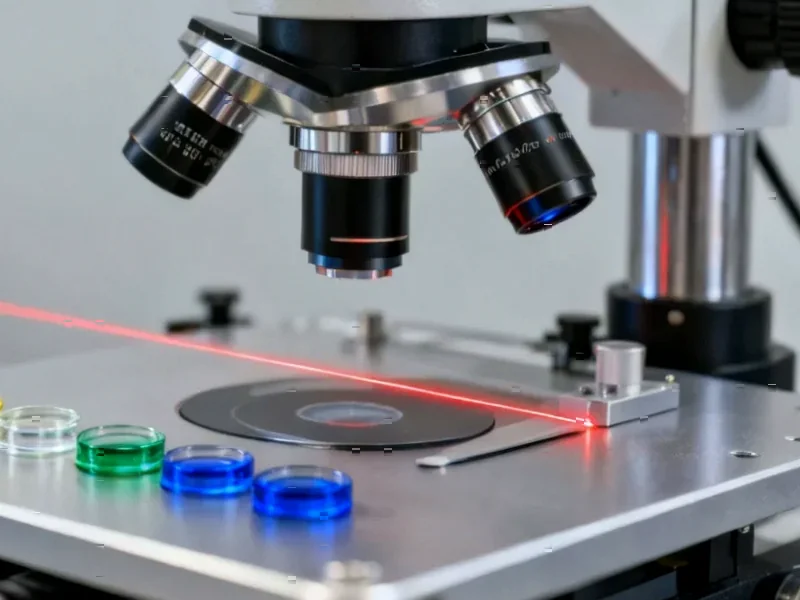According to Nature, researchers have developed ExcitationSolve, a fast globally-informed gradient-free optimizer specifically designed for variational quantum eigensolvers using excitation operators. The algorithm leverages the analytical form of the energy landscape for excitation operators, which takes the form of a second-order Fourier series, enabling global optimization with minimal quantum resource requirements. ExcitationSolve requires only four additional parameter shifts per optimization step while reusing previously determined minimum energy values, making it as resource-efficient as gradient-based methods. The approach works with fermionic excitations, qubit excitations, and Givens rotations, and can be applied to both fixed ansätze like UCCSD and adaptive approaches like ADAPT-VQE. This development represents a significant advancement in quantum-aware optimization techniques that could accelerate practical quantum chemistry simulations.
Table of Contents
The Quantum Optimization Challenge
Variational quantum algorithms represent one of the most promising near-term applications for quantum computers, particularly in quantum chemistry and materials science. However, these algorithms face a fundamental bottleneck: the optimization of ansatz parameters requires extensive quantum measurements that quickly become prohibitively expensive as problem size increases. Traditional optimization methods like gradient descent or BFGS often require hundreds or thousands of quantum circuit evaluations, each subject to statistical noise from measurement uncertainty. What makes ExcitationSolve particularly innovative is its recognition that for excitation operators—which are fundamental to quantum chemistry applications—the energy landscape has a specific mathematical structure that can be exploited to dramatically reduce measurement overhead.
Mathematical Foundations and Advantages
The key insight behind ExcitationSolve lies in understanding that excitation operators generate energy landscapes that are trigonometric polynomials of known order. While previous approaches like Rotosolve worked well for simple rotation gates, they became inefficient for higher-order excitation operators because the Fourier series order would scale exponentially with excitation complexity. ExcitationSolve maintains a constant second-order Fourier series regardless of excitation complexity, which is a remarkable mathematical property. This stems from the fundamental structure of unitary operators generated by excitation generators that satisfy specific commutation relations. The algorithm essentially performs an exact line search in each parameter direction by reconstructing the full energy landscape from just five measurement points, then uses classical computation to find the global minimum of this reconstructed function.
Practical Implications for Quantum Chemistry
For researchers working on quantum simulations of molecular systems, ExcitationSolve addresses several critical pain points. The method is directly applicable to Hartree-Fock based methods like unitary coupled cluster, which are considered the gold standard for quantum computational chemistry. What’s particularly valuable is that the approach maintains its efficiency regardless of the fermion-to-qubit mapping used (Jordan-Wigner, Bravyi-Kitaev, etc.), making it compatible with various quantum hardware architectures. In adaptive VQE approaches, the global optimization capability enables more intelligent operator selection—rather than choosing operators based on local gradient information, researchers can select operators that provide the greatest global energy improvement, potentially leading to more compact and accurate ansätze.
Limitations and Implementation Challenges
While ExcitationSolve represents a significant theoretical advancement, practical implementation faces several challenges. The method assumes that each parameter appears only once in the ansatz in terms of parameterized excitations, though the researchers note this can be generalized. More importantly, the algorithm’s performance in noisy quantum environments remains to be thoroughly tested—while the supplementary materials discuss noise robustness, real-world quantum hardware introduces complex error patterns that may affect the Fourier series reconstruction. Additionally, the multi-parameter generalization requires an exponential number of measurements in the number of simultaneously optimized parameters, limiting its practical application to small parameter subsets. Researchers will need to develop heuristic strategies for deciding when to use single-parameter versus multi-parameter optimization in realistic chemical systems.
Broader Impact on Quantum Algorithm Development
The development of ExcitationSolve reflects a broader trend in quantum algorithm research: creating “quantum-aware” classical optimization techniques that exploit mathematical structures specific to quantum computations. This approach recognizes that hybrid quantum-classical algorithms should leverage classical computation wherever possible to reduce the burden on expensive quantum resources. The mathematical framework based on Fourier analysis and variational principles could potentially be extended to other types of quantum operators beyond excitations. As quantum hardware continues to improve, optimization efficiency will become increasingly critical for demonstrating quantum advantage in practical applications, making developments like ExcitationSolve essential building blocks for the future quantum software stack.
Future Research Directions and Applications
Looking forward, ExcitationSolve opens several promising research directions. The approach could be integrated with error mitigation techniques to enhance performance on noisy intermediate-scale quantum devices. The multi-parameter extension, while currently limited, suggests opportunities for developing approximate methods that balance measurement cost with optimization quality. Additionally, the global optimization capability could be valuable for studying strongly correlated systems where local optima are particularly problematic. As quantum hardware scales to larger qubit counts, efficient optimization methods like ExcitationSolve will be crucial for tackling realistic chemical systems that require complex ansätze with many parameters. The integration of such quantum-aware optimizers with automated ansatz construction could eventually lead to fully automated quantum computational chemistry workflows.
Related Articles You May Find Interesting
- OpenAI’s Trillion-Dollar IPO Gamble: Can AI Hype Meet Wall Street Reality?
- Why Noise Is Your Secret Competitive Advantage
- China’s Satellite Data Gap: A Global Science Problem
- Lava Agni 4’s Metal Build Signals Premium Shift in Indian Smartphone Market
- EQT’s €10B Mobile.de Bid Signals Private Equity’s Classifieds Play



